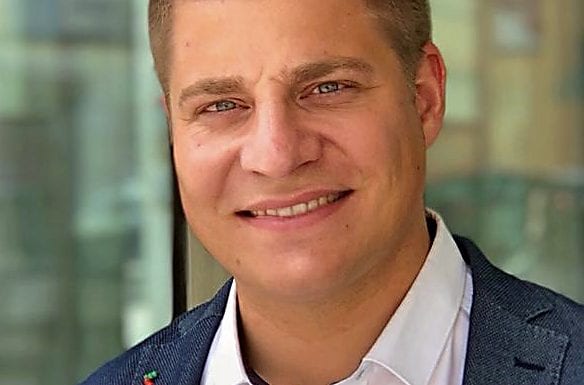What is Pit LPC, and what went into its development?
Pit LPC, or low-pressure carburizing, is an alternate method of low-pressure carburizing, and it’s conducted in a vacuum furnace. The desire to go to the pit-style construction is that, in a typical horizontal configuration, it’s hard to load a horizontal furnace with heavy loading. Subsequently, a pit-furnace design vertically loaded is much easier to produce, and material handling is easier.
With typical pit-style components, they’re large, and large components oftentimes require deep-case steps. To do a deep-case step takes numerous hours. If you’re, for example, trying to do a case step of a 1/8” or 3 mm, you could be in a typical atmosphere furnace for 24 hours. That’s the time it takes the endothermic atmosphere, which is the carbon gas, to diffuse into the surface. With low-pressure carburizing, the diffusion can happen much faster, because in a vacuum-style furnace, you can run that furnace at much higher temperatures. The materials within the furnace can withstand those environments.
The atmosphere-design furnaces are limited in their temperature ratings, and if you run them at higher temperatures, they’re going to fail on you sooner. Whereas a Pit low pressure carburizing furnace utilizes materials that will respond well when open to the air environment when you’re transferring a load from the furnace to the oil quench tank, for example. The real benefits are that you can run that Pit low pressure carburizing furnace at much higher temperatures, which now drastically reduces your carburizing cycle time because of the kinetics and the rate at which the carbon diffusion into the steel.
What are some of the other benefits of Pit LPC over traditional atmosphere carburizing?
It’s much safer and environmentally friendly. Being able to reduce those cycle times and getting higher throughput are major advantages. With sustainability being predominant in today’s industry, people are paying a lot more attention to safer, environmentally friendly pieces of equipment. You can walk up to a vacuum furnace and put your hand right on it. That’s how they’re constructed. You couldn’t dream of doing that with an atmosphere’s tight design. Vacuum furnaces provide a better environment for your employees and operators and, therefore, become a lot more desirable to work around, in addition to the other benefits associated with the process.
Could you go into more detail about the sustainability advantages for the Pit LPC?
You’re going to utilize much less process consumables, i.e. your carbon gas. You’re not required to use an endothermic generator that uses a methanol or acetone-type gas carrier. You’re not emitting carbon dioxide and carbon monoxide, so you’re getting that benefit as well. We don’t emit those carbon gases to the environment.
What are some of the potential applications for Pit LPC?
Pit LPC can be using many applications, particularly with very large, bulky parts or with many small parts. It will lend itself to wind turbines, power generation, heavy mining, heavy machines, railway, mining, oil and gas markets — basically anything that’s going to have a large gearing component or a large bearing component. Because the Pit LPC furnace houses a large working volume, it is optimized for large components and heavy loading capabilities. Those types of markets that use those larger gearing components will benefit greatly from this type of technology.
In what ways is Pit LPC more economical than the traditional method?
As I mentioned before, the process time can be drastically reduced due to the elevated processing temperature, so you’re not heating the parts as long, so you’re able to get that faster throughput. You have the benefits of utilizing just the amount of carbon gas that you need. We put in just what you need to cover all the surface areas that you would like to have carburized. We’re putting in low-pressure, very small amounts of carbon (measured in lpm), rather than filling up the furnace with the carbon potential of a traditional atmosphere furnace (measured in CFH). You’re not doing that with low-pressure carburizing. We put in just enough, then we stop, let it diffuse, then we’ll insert some more, let it diffuse in, and as that diffusion happens, you’re getting your case depth.
What’s been the industry response so far?
So far, it’s good. It’s newer to the industry, so it’s off and running now. We’ve got a number of customers that are engaged in it. It’s going to really help users get better returns on their investment by being able to heat-treat faster. With low-pressure carburizing, the case uniformity is much better than an atmospheric type. It’s because the carbon goes right to the surface, and it diffuses uniformly throughout the entire geometry of the part, so you don’t get these instances where you can have a light case and a deep case in various areas of your component.
Anything else you’d like to mention?
Our company, SECO/VACUUM, which is a SECO/WARWICK Group company, not only manufactures this type of equipment, but we manufacture various other vacuum and atmospheric equipment, so if anybody needs solutions to their heat-treatment issues or troubles, they can contact us. We can lend our expertise and help them through their needs and solutions.
MORE INFO www.secovacusa.com


































